Keeping workers safe while they’re at height is one of the most important, and sometimes, challenging tasks on a job site. That’s why fall protection and fall prevention are taken seriously by governing bodies in their written standards.
Without an adequate understanding of fall protection, fall prevention, and the components that make up both safety systems, you may be missing an important detail or two, which could be the difference between a safe and successful day on the job site and the occurrence of a catastrophic incident.
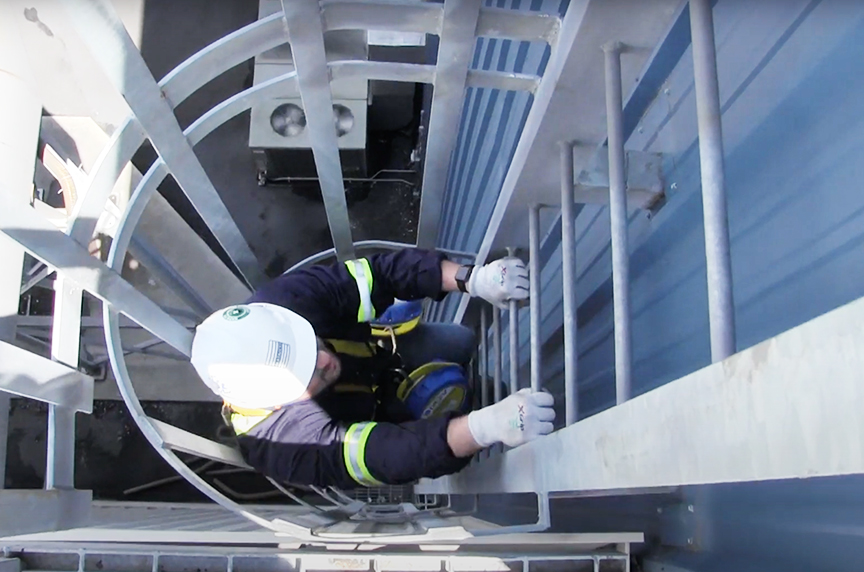
In this piece, you will learn about:
- OSHA (Occupational Safety and Health Administration) definitions of common terms
- Fall protection definitions
- Fall prevention terms
OSHA Definitions of Common Fall Protection Terms
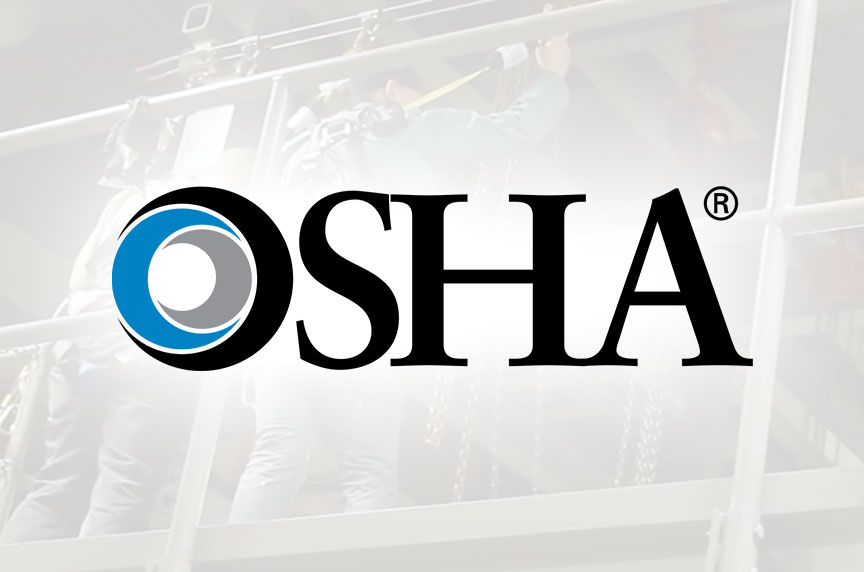
OSHA 1926.32 lists common terms used and found in fall protection, and the standard defines each one in its own subpart.
“Act” refers to Section 107 of the Contract Work Hours and Safety Standards Act, which is also known as the Construction Safety Act (86 Stat. 96; 40 U.S.C. 333) [OSHA 1926.32(a)].
“ANSI” stands for the American National Standards Institute [OSHA 1926.32(b)].
“Approved” means sanctioned, endorsed, accredited, certified, or accepted as satisfactory by a duly constituted and nationally recognized authority or agency [OSHA 1926.32(c)].
“Authorized person” is a person approved or assigned by the employer to perform a specific type of duty or duties, or to be at a specific location or locations at the job site [OSHA 1926.32(d)].
“Administration” means the Occupational Safety and Health Administration [OSHA 1926.32(e)].
“Competent person” is one capable of identifying existing and predictable hazards in the surroundings or working conditions which are unsanitary, hazardous, or dangerous to employees, and who has authorization to take prompt corrective measures to eliminate them [OSHA 1926.32(f)].
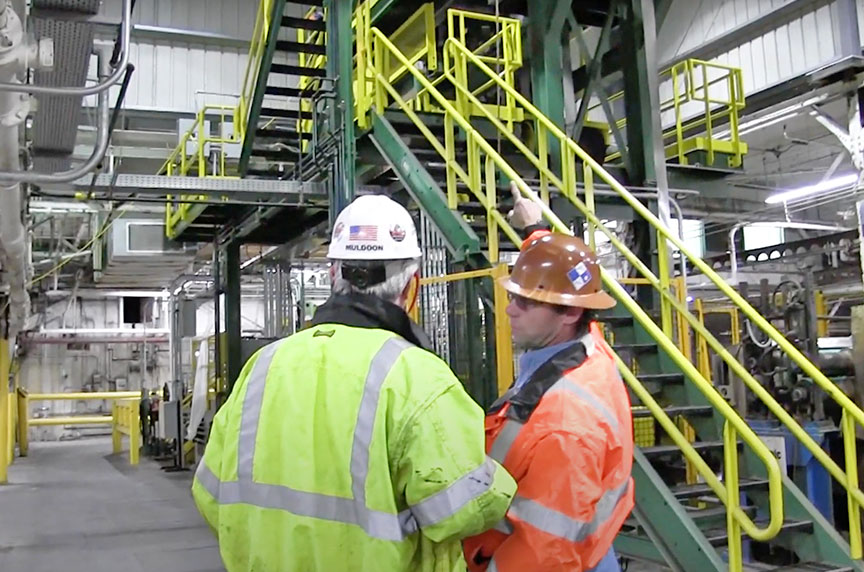
“Construction work” refers to work for construction, alteration, and/or repair, including painting and decorating [OSHA 1926.32(g)].
“Defect” is any characteristic or condition which tends to weaken or reduce the strength of the tool, object, or structure of which it is a part [OSHA 1926.32(h)].
“Designated person” means “authorized person” [OSHA 1926.32(i)].
Defining an Employee
“Employee” is every laborer or mechanic under the Act regardless of the contractual relationship which may be alleged to exist between the laborer and mechanic and the contractor or subcontractor who engaged him. “Laborer and mechanic” are not defined in the Act, but the identical terms are used in the Davis-Bacon Act (40 U.S.C. 276a), which provides for minimum wage protection on Federal and federally assisted construction contracts.
The use of the same term in a statute which often applies concurrently with section 107 of the Act has considerable presidential value in ascertaining the meaning of “laborer and mechanic” as used in the Act. “Laborer” generally means one who performs manual labor or who labors at an occupation requiring physical strength; “mechanic” generally means a worker skilled with tools. See 18 Comp. Gen. 341. [OSHA 1926.32(j)].
“Employer” means contractor or subcontractor within the meaning of the Act and of this part [OSHA 1926.32(k)].
Hazard Identification and Other Terms
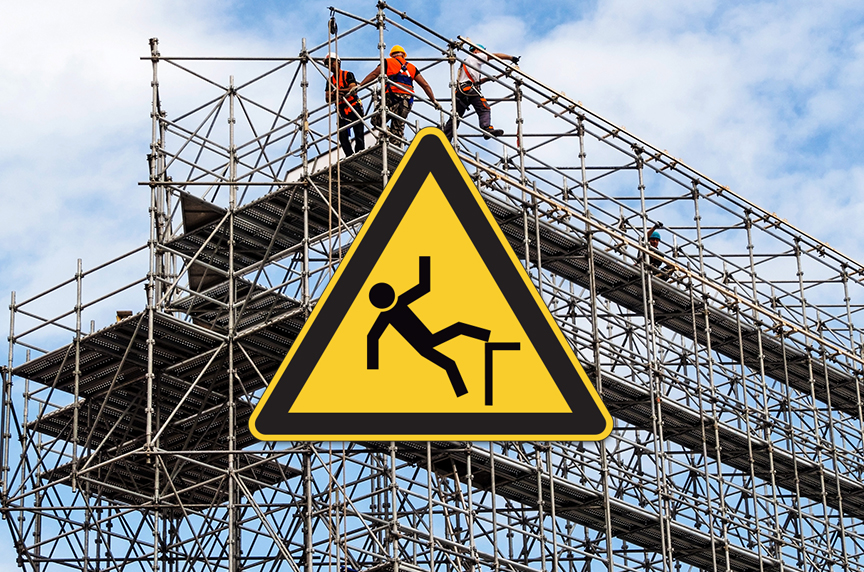
“Hazardous substance” means a substance which, by reason of being explosive, flammable, poisonous, corrosive, oxidizing, irritating, or otherwise harmful, is likely to cause death or injury. [OSHA 1926.32(l)].
“Qualified” means one who, by possession of a recognized degree, certificate, or professional standing, or who by extensive knowledge, training, and experience, has successfully demonstrated his ability to solve or resolve problems relating to the subject matter, the work, or the project. [OSHA 1926.32(m)].
“Safety factor” means the ratio of the ultimate breaking strength of a member or piece of material or equipment to the actual working stress or safe load when in use. [OSHA 1926.32(n)].
“Secretary” means the Secretary of Labor. [OSHA 1926.32(o)].
“SAE” means Society of Automotive Engineers. [OSHA 1926.32(p)].
“Shall” means mandatory. [OSHA 1926.32(q)].
“Should” means recommended. [OSHA 1926.32(r)].
“Suitable” means that which fits, and has the qualities or qualifications to meet a given purpose, occasion, condition, function, or circumstance. [OSHA 1926.32(s)].
Fall Protection Components
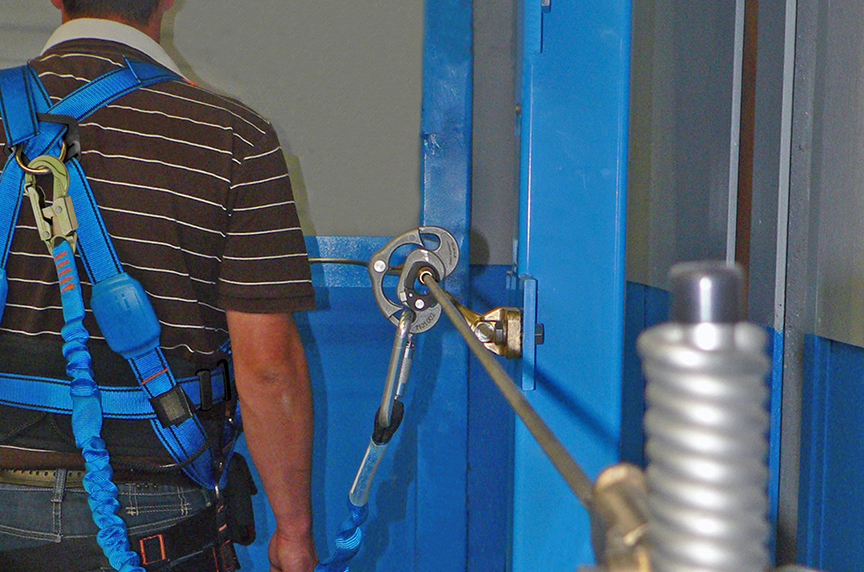
Personal fall protection involves the use of several components, including:
- Harness
- Lanyard
- Self-Retracting Lanyard (SRL)
- Anchor point
- Rebar Assemblies
- Carabiners
- Rope Grabs
- Snap Hooks
- Anchorage Connectors
- Body Belts
Harness
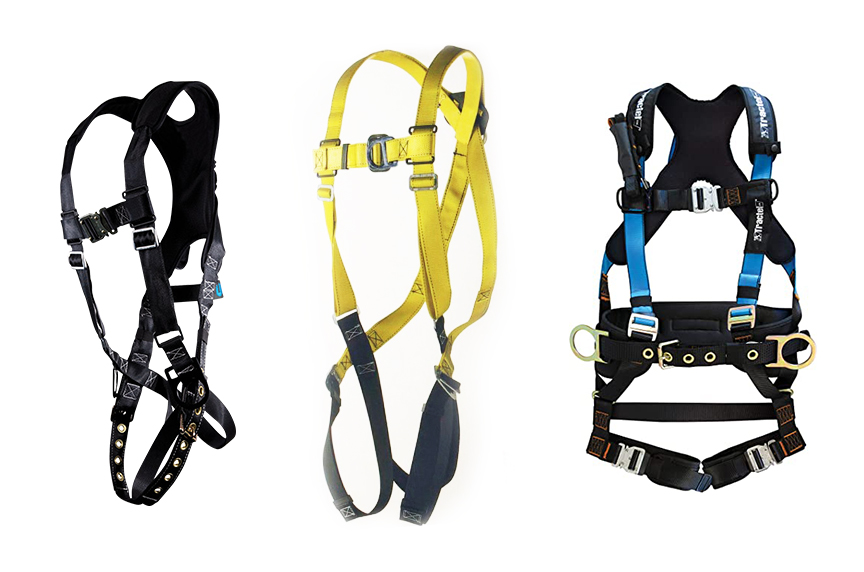
Harnesses are considered “personal fall arrest protection.” The full body harnesses are approved for use in:
- Fall arrest
- Positioning
- Confined space rescue
- Ladder climbing devices
The total combined body and tool weight of the person wearing the harness must be under 310 pounds.
The back D-ring is the only connection point suitable for fall arrest. Other D-rings are used for confined space (shoulder D-rings), ladder climbing devices (front/chest D-ring), or position (side/hip D-rings).
The webbings of some harnesses are burn resistant, chemical resistant, or flame-retardant.
Lanyard
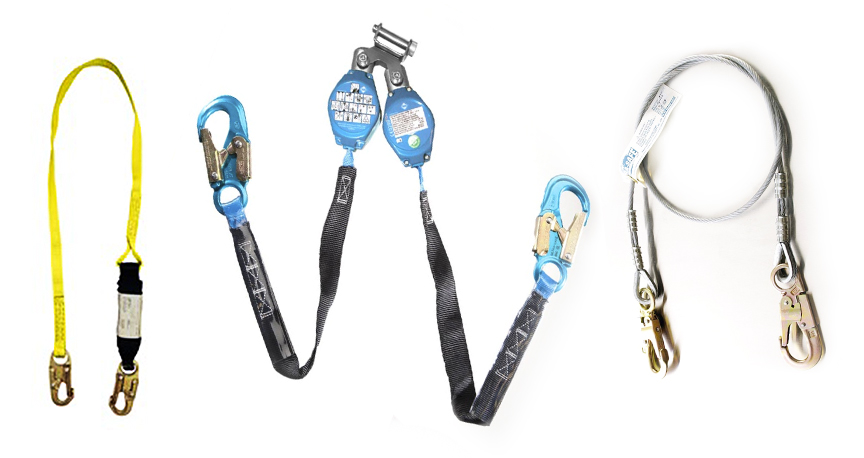
A lanyard is a flexible rope or strap with connectors on each end, which connect to a body belt or harness, and then, to a lifeline, anchor or breaking (deceleration) device.
Types of lanyards include:
- Self-retracting-Eliminates excess slack in the lanyard
- Shock-absorbing-Slows and eventually stops the descent and absorbs force
- Synthetic rope-Absorbs some force by stretching
- Synthetic webbing-Strong and absorbs little force
Self-Retracting Lanyard (SRL)
An SRL is a deceleration device that functions like a seatbelt. During normal movement, the SRL can be released or retracted. If a fall does occur, the device locks, which minimizes the fall length.
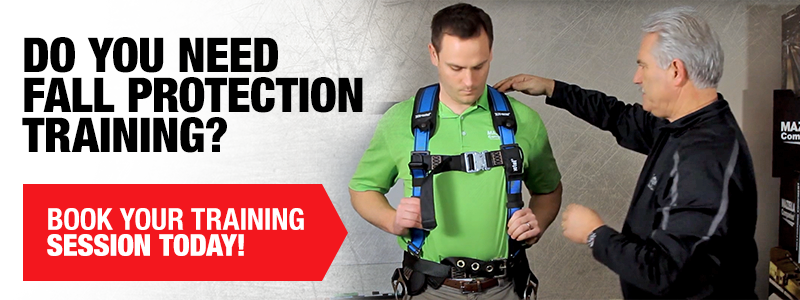
Anchor point
Anchor points are the secure point for lanyards, lifelines, or other deceleration devices. Those devices include the short lanyard attached to the rope grab and body harness.
There are two types of anchor points:
- Temporary
- Permanent
With temporary anchor points, employees should use solid structures, such as structural support members.
Permanent anchorage points must be designed by a qualified person, and approved by a registered professional engineer. These points must have a safety factor of at least twice the maximum anticipated force during a fall.
Rebar Assemblies
A rebar assembly is a work positioning device designed to allow workers to perform hands-free work while elevated off the ground. While still being connected to a fall arrest device, the user can attach the snap hooks to the side D-rings on their harness, attach the rebar hook to the rebar structure, lead away from the wall and begin work.
Carabiners
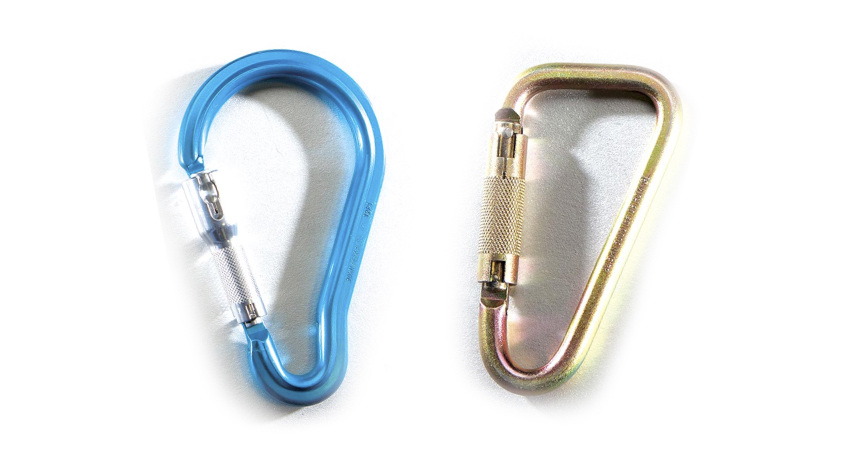
A carabiner is usually a D-shaped or oblong metal ring with one spring-hinged side that is used as a connector, and to hold a freely running rope.
Rope Grab
A rope grab is a forged device that will lock automatically in the event of a fall.
Snap Hooks
Snap hooks are self-closing/self-locking connectors that provide an eye for permanent attachment of a lifeline or lanyard.
Anchorage Connectors
Anchorage connectors attach connecting devices to an anchor point if there is no direct connection. During a fall, the worker will be suspended from the anchorage point.
Body Belts
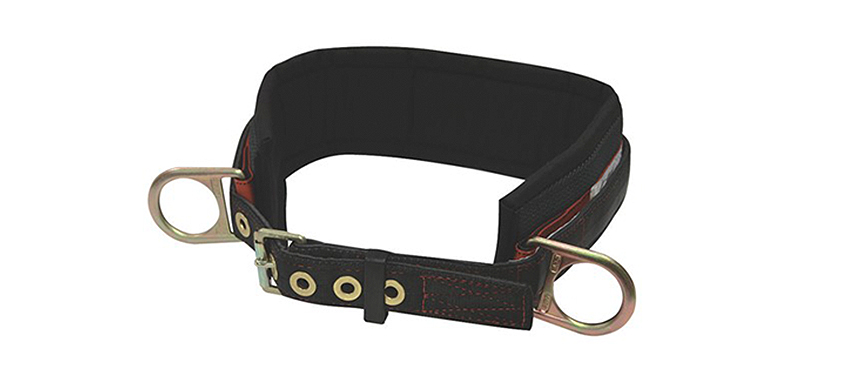
Used for personal work positioning, a body belt is a singular strap that is secured around the waist of the individual using a buckle and attached to a lanyard, or lifeline, keeping the person in a safe working position.
The body belt tethers and restricts the person from getting too close to a fall hazard so a fall never occurs. A body belt must not be used with a fall arrest system.
Fall Prevention Components
Guardrails
Guardrail
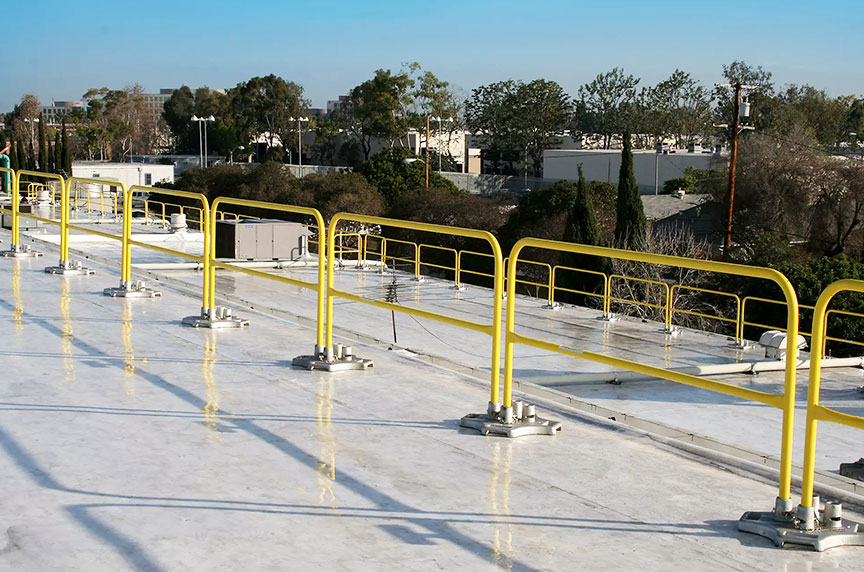
A key component of fall prevention, guardrails consist of a vertical barrier placed along exposed edges of a walking or working surface. The standard guardrail system features a toprail, intermediate (or mid) rail, and support posts.
To add more layers of fall protection or address a common problem in fall protection, screens, mesh, or balusters could be utilized in tandem with the guardrails.
Guardrails are designed and built to specific safety regulations and should not be modified in any way. If there is damage to a guardrail, the fall prevention system must be repaired promptly. Also, guardrails should not be used as an anchor point for fall protection systems, but should a section be removed for the delivery of materials, fall protection systems need to be in place.
Toprails
The toprail of a guardrail system commonly is constructed to 42” from the walking/working surface, but some vary between 39” and 45”. Regardless of height, toprails must support a force of 200 lbs. in a downward and outward direction.
Midrails
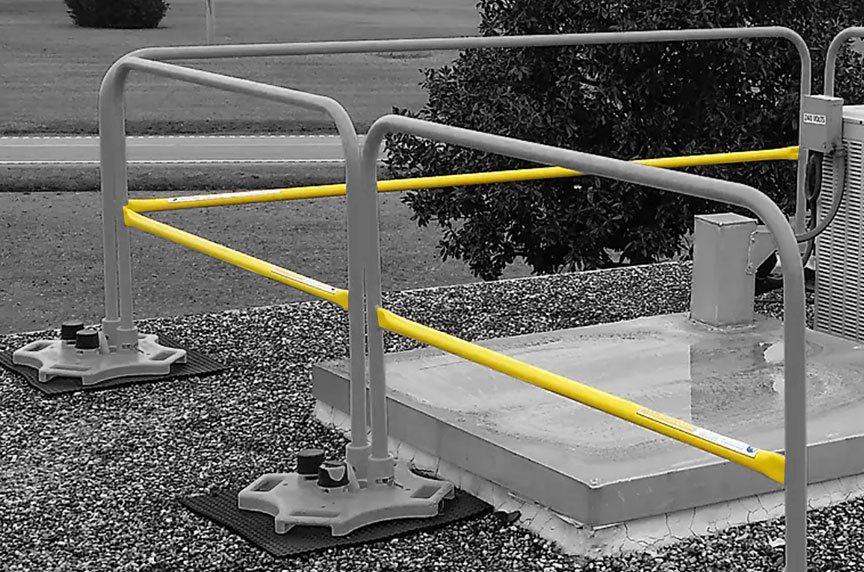
Midrails are halfway between the toprail and walking/working surface and must stand up against a downward and outward directional force of at least 150 lbs.
Highly visible tape or flags must be placed every 6’ to increase visibility if wire-rope guardrail systems are utilized.
Toe Boards
Toe boards are guards attached to the bottom of a working surface. If toe boards are installed to prevent falling materials from injuring workers on a lower level, they must have a height of 3.5” above the walking/working surface.
Stairways
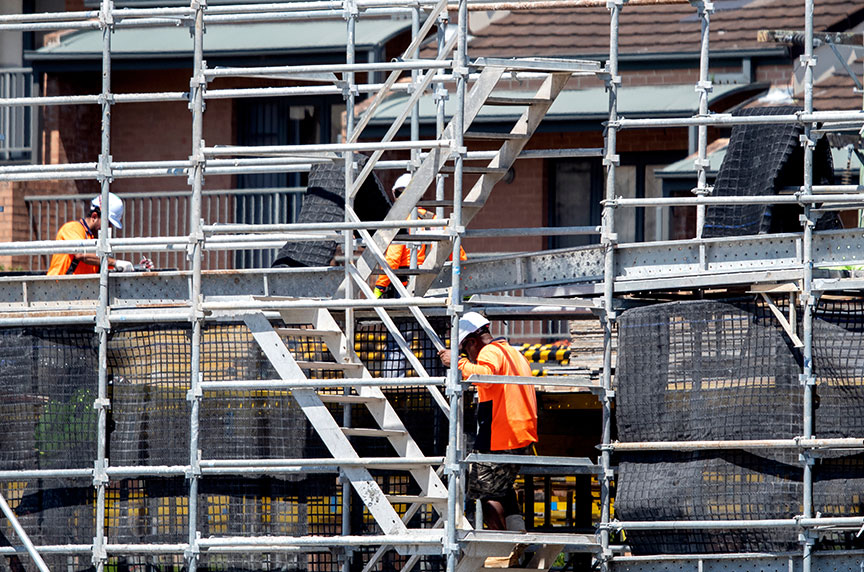
When a flight of stairs has at least four risers, the stairway must have at least one handrail to provide support for workers as they climb up or down. Stairs wider than 44” need handrails on both sides, and those wider than 88” need a handrail down the middle and on both sides of the staircase.
Platforms
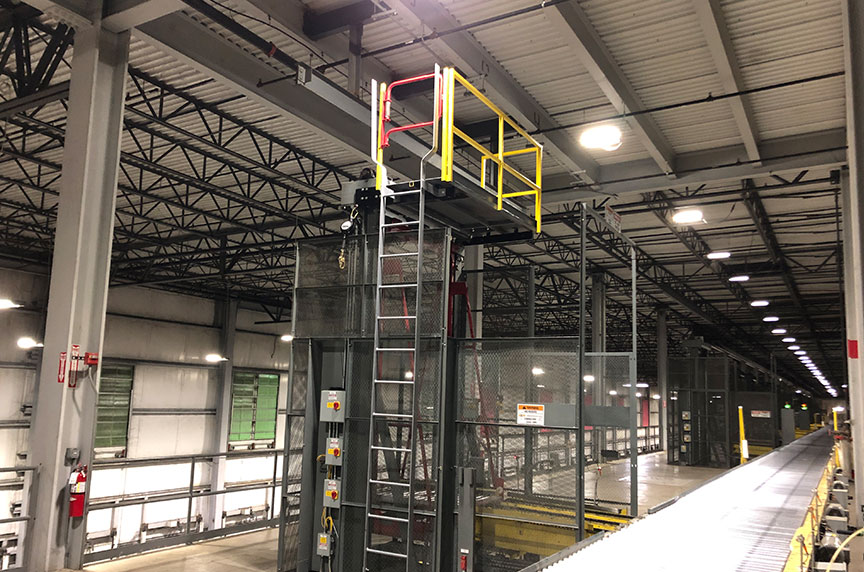
According to OSHA 1917.118(e)(2), a landing platform capable of supporting a load of 100psf (pounds per square foot) and fitted with guardrails complying with Sec. 1917.112(c) shall be provided at least every 30’, except as specified in paragraph (e)(2)(iv) of the 1917.112 section.
Netting
According to OSHA 1926.105, safety nets shall extend 8’ beyond the edge of the work surface where employees are exposed and shall be installed as close under the work surface as possible, but in no case more than 25’ below such work surface.
Nets shall be hung with sufficient clearance to prevent a user’s contact with the surfaces or structures below. Such clearances shall be determined by the impact load testing.
Wrapping it Up
Educating yourself and the other employees of your company about terms and fall protection/prevention systems, you can help make your workplace safer.
There are many factors to consider with fall protection and fall prevention systems, and this article provides foundational information and gives you a base understanding of the complexity of safety on the job site.
By learning the basic terms and understanding the standards that outline job site safety, you will be able to review your fall protection and fall prevention systems, and how they could be improved through education and training.
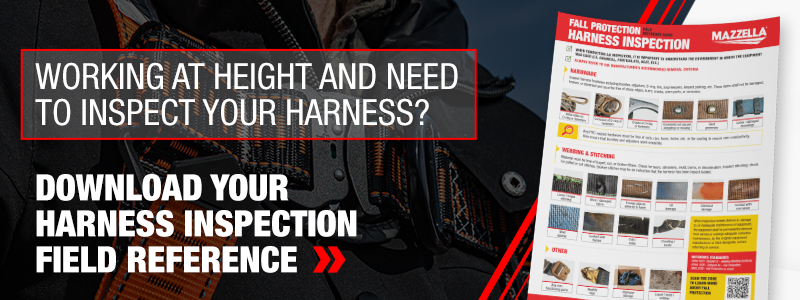

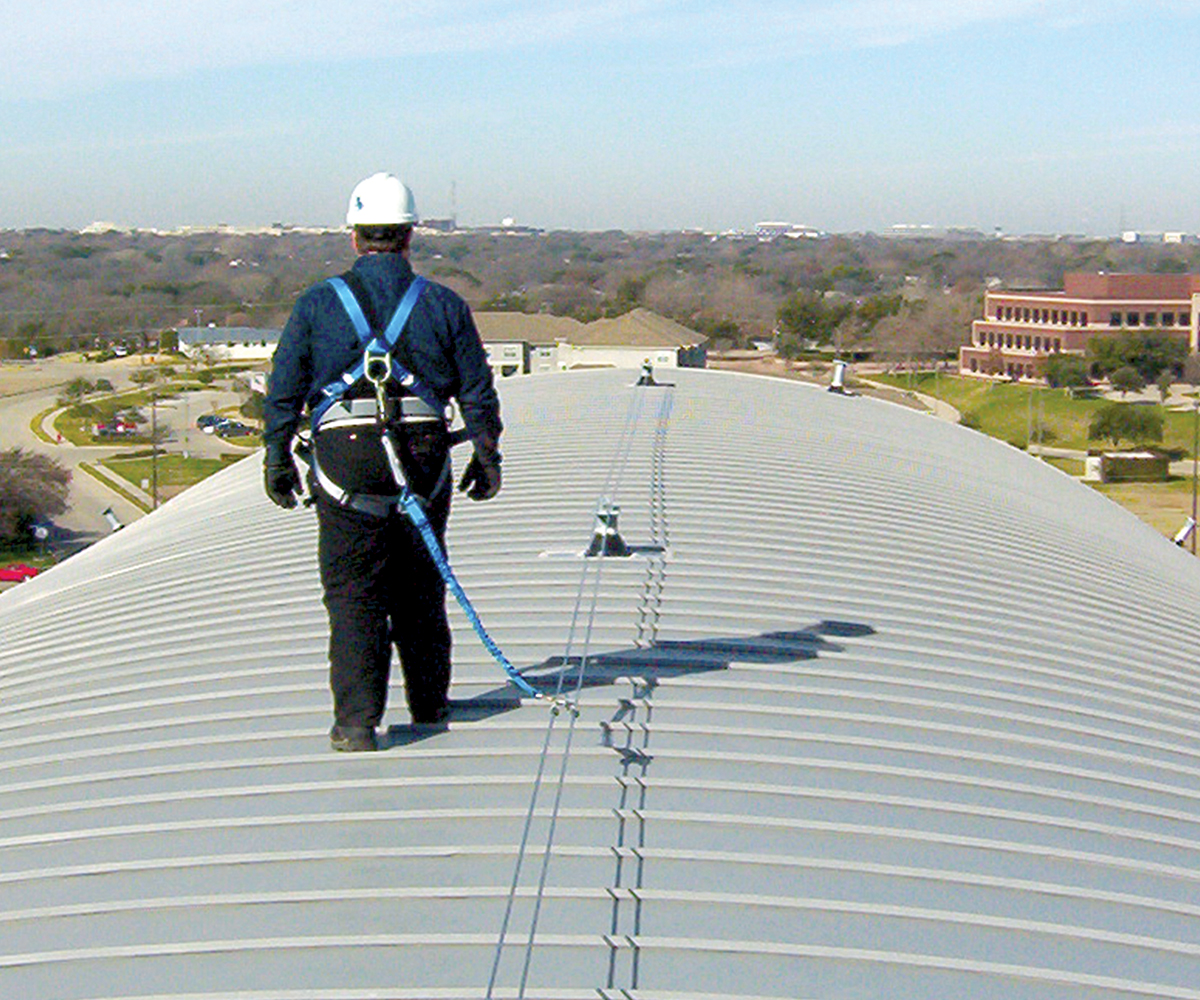
❯ Fall Protection
We are a leading supplier and installer of engineered fall protection systems in the U.S., as well as a distributor of soft goods like harnesses, lanyards, self-retracting lifelines, scaffolding, and netting.
Copyright 2021. Mazzella Companies.
